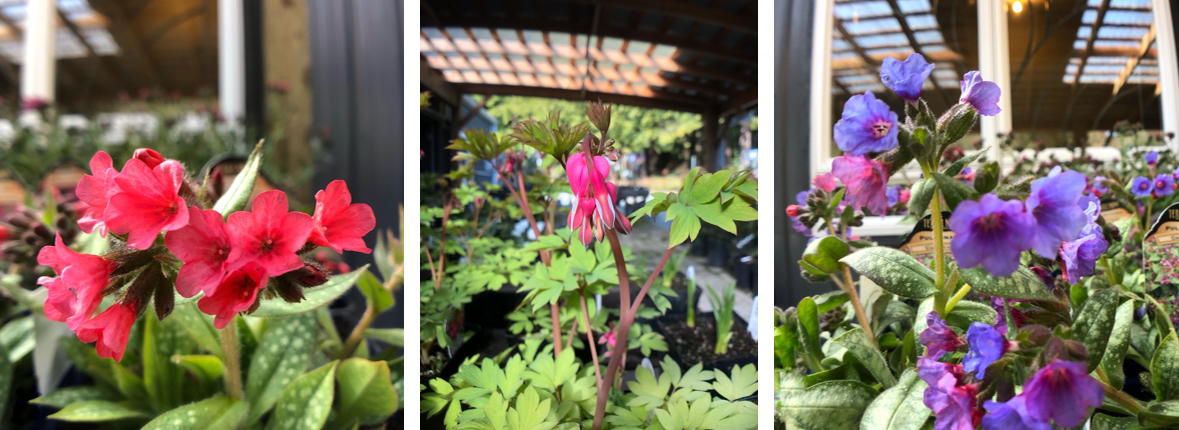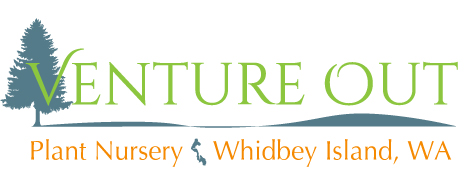Hummingbird Early Favorites
Looking for plants that hummingbirds love? Anna’s hummingbirds, the only species to overwinter rather than migrate south, will especially appreciate these cold season bloomers. During the long months of January, February, and March, nectar is less abundant. But with spring in the air, this is the perfect time to plant your garden for next year’s winter hummingbird buffet!

Pulmonaria
Also called lungwort, this shade-loving perennial is blooming now in a variety of colors, from hot pink to violet blue. Pulmonaria is a rich source of nectar, providing food for bees and butterflies, as well as hummingbirds. The rough leaf texture deters the three most common garden pests on Whidbey Island: slugs, rabbits, and deer. Pulmonaria’s attractive spotted leaves are very resistant to powdery mildew, and it blooms well in part sun to deep shade.
‘Yuletide’ Camellia
Yuletide is one of the earliest blooming camellias. With bright red petals and a golden center, it’s no wonder these flowers attract hummingbirds. This glossy-leafed evergreen shrub blooms well even in part shade.
Mahonia x media ‘Charity’
This winter-blooming shrub has already flowered for the season, but the vivid yellow, fragrant flowers provided food for overwintering hummingbirds in December and January. Mahonia is also deer and rabbit resistant, and tolerant of both sun and shade.
Hellebore
With a variety of flower colors and leaf textures, the selection of hellebores seems endless. These perennials bloom from January to March, are shade tolerant, and are both deer and rabbit resistant.
Flowering Currant
A native flowering shrub that bursts into bloom in March, just in time to feed the returning migratory hummingbirds. Even with the recent cold weather, we saw some flowering currants blooming last week!
Bleeding Heart
These nodding pink blooms appear in early spring, attracting hungry hummingbirds. Bleeding heart prefers moist soil and part shade.
Other Hummingbird Attractors
Water Sources
Hummingbirds need access to shallow pools of water for drinking and bathing. Shallow bird baths (we’ve got some beauties!) or garden misters are recommended.
Hiding Places
These tiny birds need a place to rest, out of view of predators. Tall shrubs offer the perfect respite.
Healthy, Organic Gardens
Did you know hummingbirds also eat insects? It turns out they can’t survive on sugar alone! Hummingbirds need to consume small insects and spiders for protein, so cultivating an organic garden free of chemical pesticides will provide them with a balanced diet.
Undisturbed Nests
Be careful when pruning or removing trees in your landscape: there might be a hummingbird (or other bird species) nest up there! Hummingbirds lay eggs the size of jelly beans in late winter/early spring, and hatchlings remain in the nest 3 weeks after they emerge. By May or June, the hatchlings should fly away and a nesting tree can be removed.
